
How to Clean Your Glasses: A Step-by-Step Guide
Posted by Team Debby on 1st May 2024
Clear lenses = clear vision. But let’s be honest—smudgy fingerprints, dust, and mystery streaks have a way of finding your glasses. Left alone, they don’t just cloud your view—they can cause eye strain and shorten the life of your frames.
The good news? With the right tools and a gentle touch, you can keep your eyewear looking flawless and lasting longer. Think of this as your glasses spa day—quick, easy, and totally worth it.
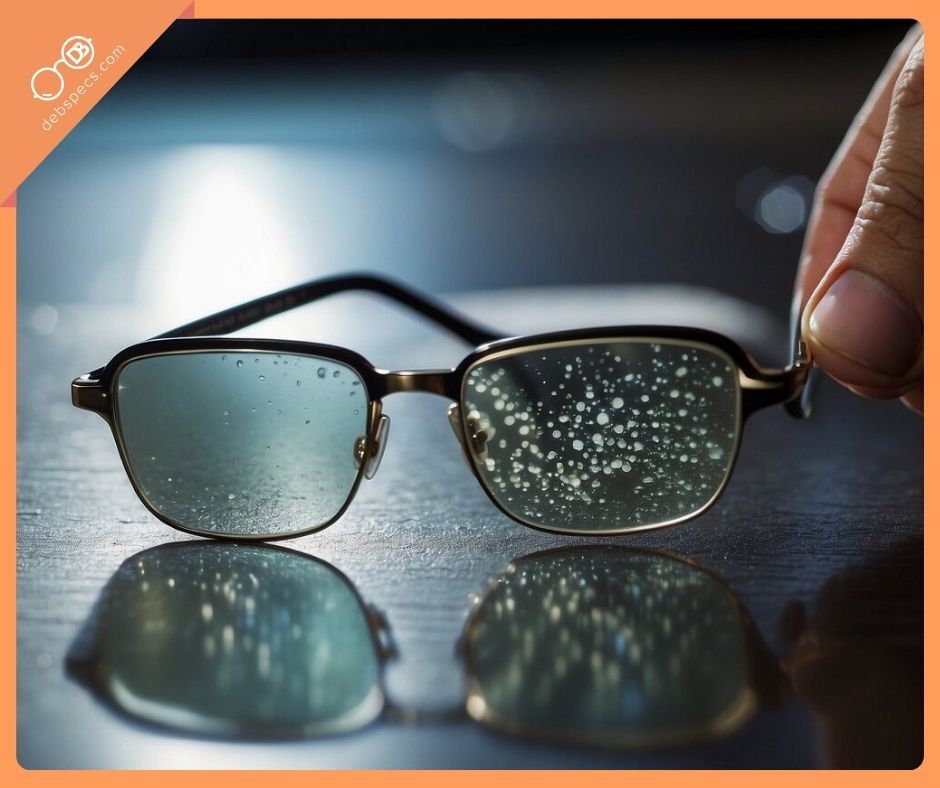
Why Cleaning Your Glasses Matters
- Keeps your vision crisp and clear
- Reduces eye strain from smudges and dirt buildup
- Protects your lens coatings (like scratch-resistant or anti-glare)
- Extends the lifespan of your frames and lenses
Myth: Glasses can handle any cleaner.
Fact: Harsh chemicals (like Windex or bleach) can strip coatings and damage lenses. Stick with safe, lens-friendly cleaners.
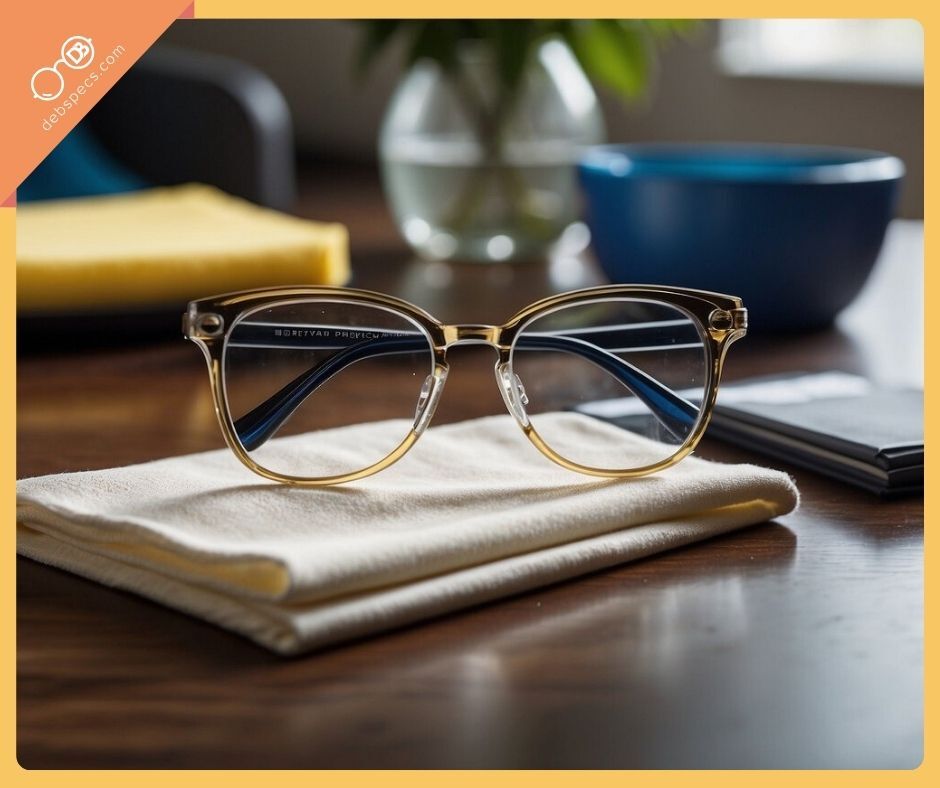
Keeping Vision Clear Between Cleanings
As the article shows, proper cleaning can make a remarkable difference in how crisp and comfortable your lenses feel throughout the day. Readers designed with quality materials and coatings can help maintain that clarity longer, reducing smudging and strain during close work. The options below illustrate how thoughtful construction supports the clean, clear vision you’ve just learned to preserve.
Step 1: Prep with Clean Hands
Before you even touch your glasses, wash your hands. Oils, lotion, or dirt can transfer directly to your lenses.
How to do it right:
- Wash with warm or cool water (not hot).
- Lather with plain soap for at least 20 seconds.
- Rinse thoroughly.
- Dry with a clean towel.
Now your hands are smudge-free and ready.
Step 2: Inspect Before You Clean
- Lenses: Check for dust, lint, or fingerprints.
- Frames: Look around the nose pads and hinges for buildup.
This quick scan helps you avoid grinding grit into your lenses.
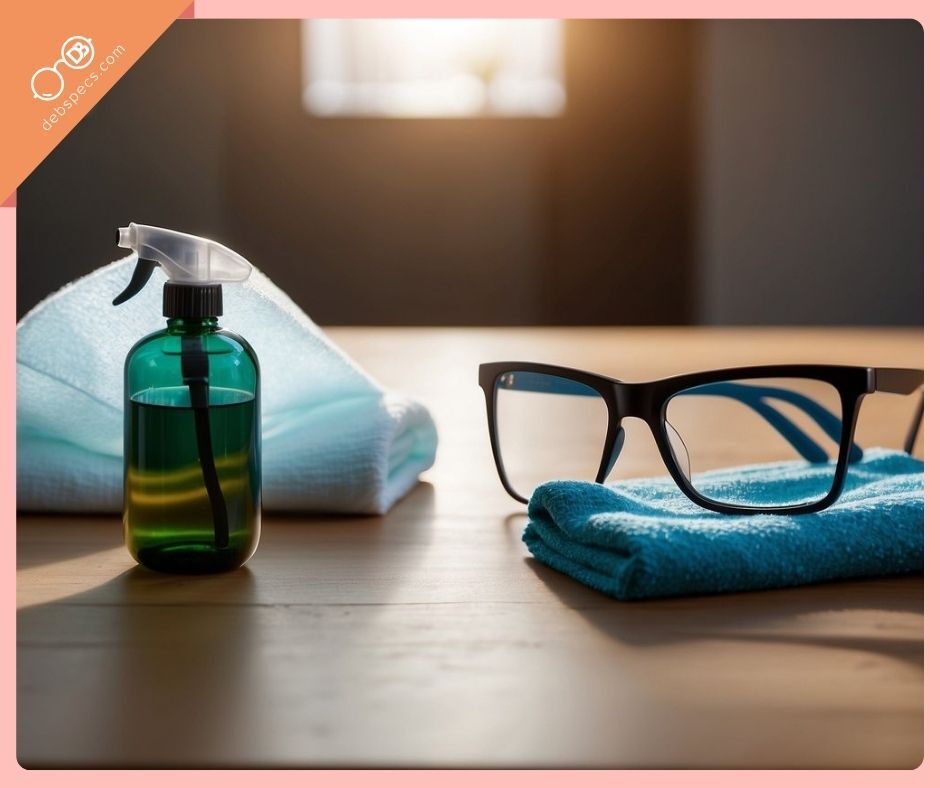
Step 3: Choose the Right Cleaning Tools
The Cloth
✅ Use: A clean microfiber cloth (soft and safe for lenses).
❌ Avoid: Paper towels, napkins, tissues, or your shirt—these scratch coatings.
The Cleaner
✅ Best picks:
- Lens spray made for eyeglasses
- A drop of lotion-free dish soap mixed with water
❌ Avoid:
- Ammonia, vinegar, bleach, or alcohol (they strip coatings)
- Anything with lotion or fragrance (they leave streaks)
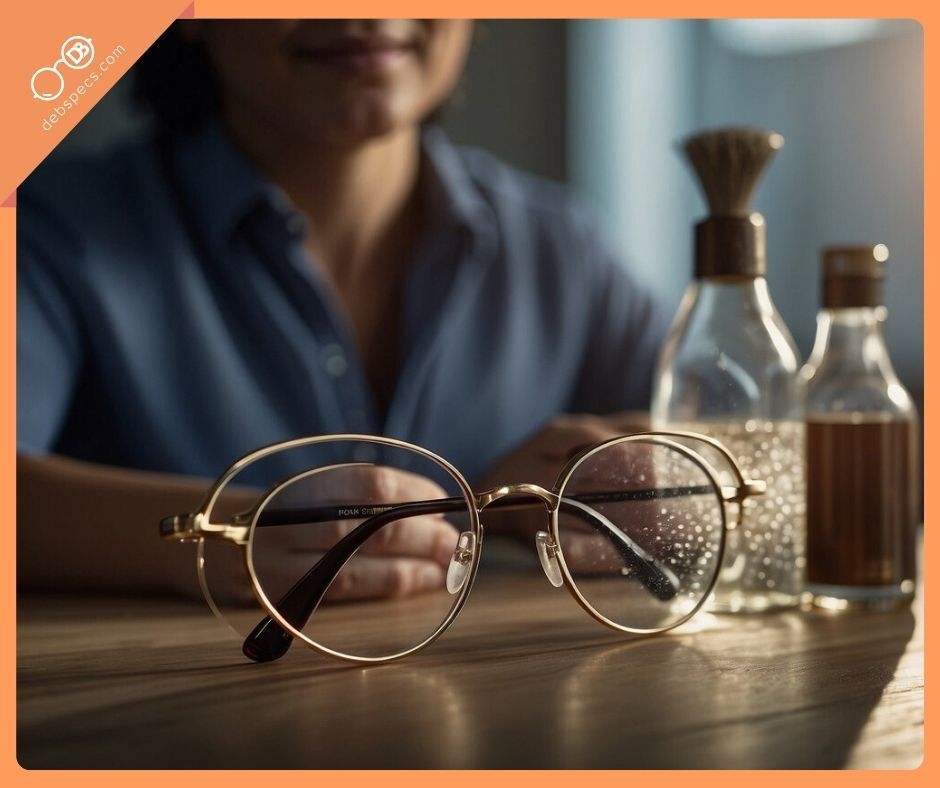
Step 4: Rinse First
Hold your glasses under lukewarm running water. This washes away dust so it doesn’t scratch when you wipe. Never use hot water—it can warp coatings.
Step 5: Clean with Soap
- Put a drop of mild, lotion-free dish soap on each lens.
- Gently rub both sides of the lenses and the entire frame with your fingertips.
- Rinse thoroughly until all suds are gone.
Step 6: Dry Like a Pro
- Shake off extra water.
- Pat (don’t rub) with a clean microfiber cloth.
- For a flawless finish, polish with a fresh section of the cloth.
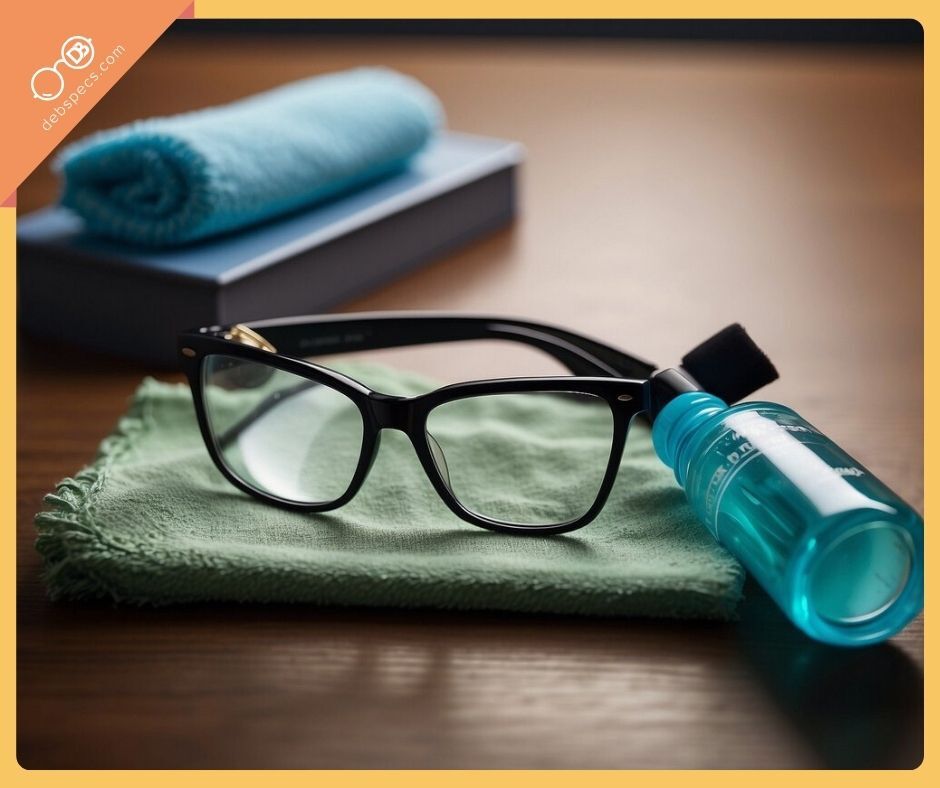
Everyday Maintenance Tips
- Store glasses in a hard case lined with soft fabric.
- Never place them face-down on a surface.
- Wipe lenses daily with microfiber + lens cleaner.
- Check screws weekly so arms don’t loosen.
- Consider an anti-scratch warranty for peace of mind.
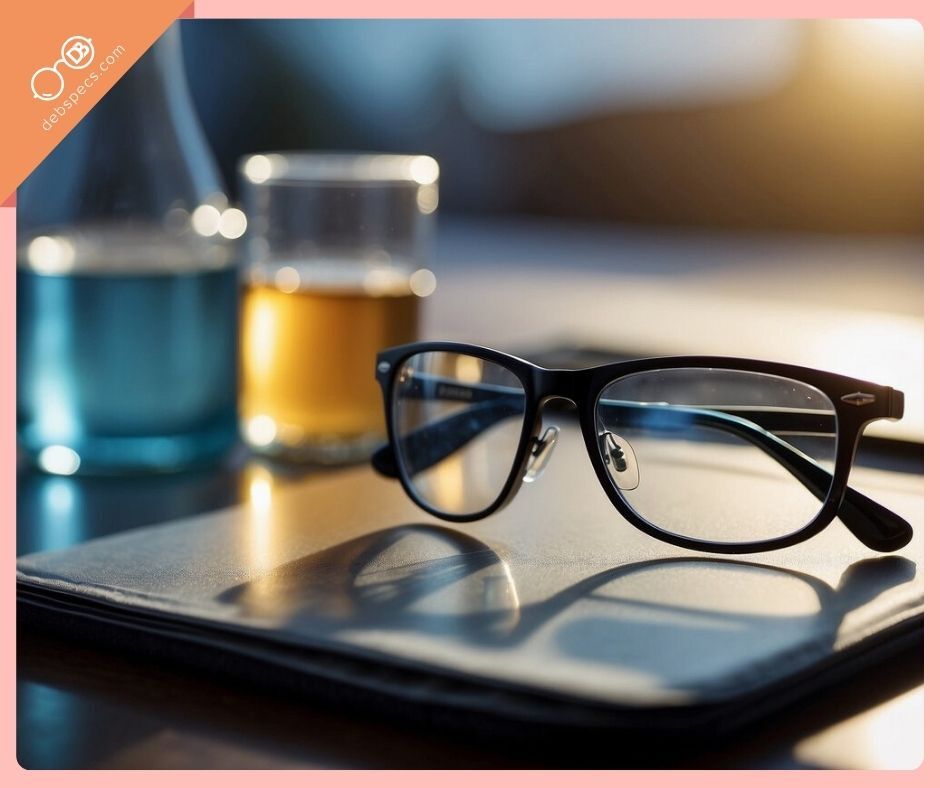
Troubleshooting Common Issues
Smudges & Streaks
- Rinse under lukewarm water.
- Add a drop of dish soap, rub, and rinse again.
- Dry with microfiber.
- Finish with a gentle polish.
Scratches
- Reality check: Once scratched, lenses can’t truly be “fixed.”
- You can try a glasses scratch-repair kit for temporary improvement.
- Avoid toothpaste, baking soda, or DIY hacks—they usually make scratches worse.
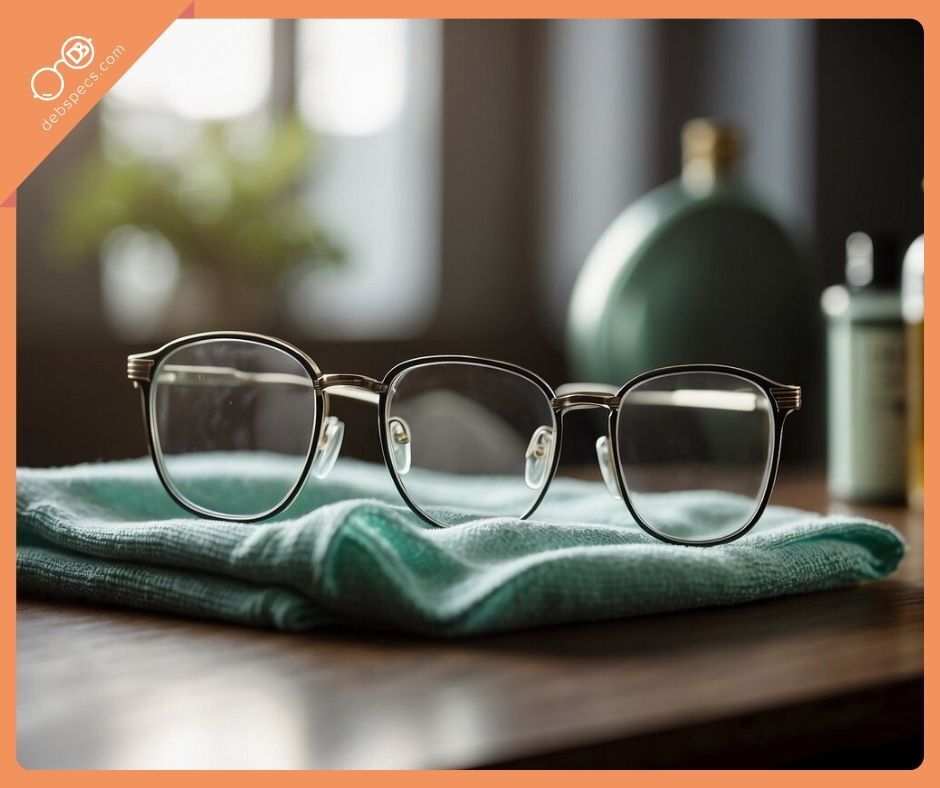
TL;DR (Quick Summary)
- Wash hands before touching glasses.
- Rinse under lukewarm water first.
- Use dish soap or lens cleaner + microfiber cloth.
- Skip harsh chemicals, paper towels, and hot water.
- Store in a case, clean daily, and check frames regularly.
FAQs
What’s the best way to clean eyeglasses at home?
Use lukewarm water + a drop of lotion-free dish soap, then rinse and dry with a microfiber cloth.
Can I completely remove scratches from glasses?
No—scratches are permanent. Repair kits may minimize their appearance, but replacement is the only true fix.
Is vinegar safe for cleaning glasses?
Not recommended. It can damage coatings and corrode parts of your frames.
What if I don’t have a microfiber cloth?
Use a clean, soft cotton cloth as a backup. Avoid tissues or paper products.
How do I clean the tiny crevices around my frames?
Use a soft toothbrush to gently brush away debris, then wipe with a microfiber cloth.
Is rubbing alcohol okay to use?
Only if diluted, and not on coated lenses or delicate frames. When in doubt, skip it.
Final Word
Cleaning your glasses doesn’t have to be complicated—it’s just about using the right steps and tools. Treat your readers like the stylish accessory they are, and they’ll reward you with crystal-clear vision and longer wear.
At DebbySpecs, we believe taking care of your glasses is just as important as choosing frames that flatter your style. After all—readers aren’t just for reading; they’re part of your look.

